FMS Pilatus PC-21
Publié le :
2017-01-21 11:00:00
Catégories :
Articles
FMS Pilatus PC-21
Unboxing and flight test

After the well known PC-7 and PC-9, the Swiss aircraft manufacturer Pilatus introduced a brand new military turboprop trainer, the PC-21, featuring a quite short wing, designed to give a behavior very close to a jet fighter. High tech systems used prepare the student to the world of modern jet fighters and the PC-21 is the only turboprop trainer allowing to fly then jets like FA-18, Grippen or Rafale directly. FMS recreated this beauty with many details and we will now discover this brand new kit.
Unboxing
The first look shows a special molded box, designed to maintain each part of the model, a really good way to protect the EPO foam parts. The number of parts is low, due to the highty pre-assembled design of the kit.
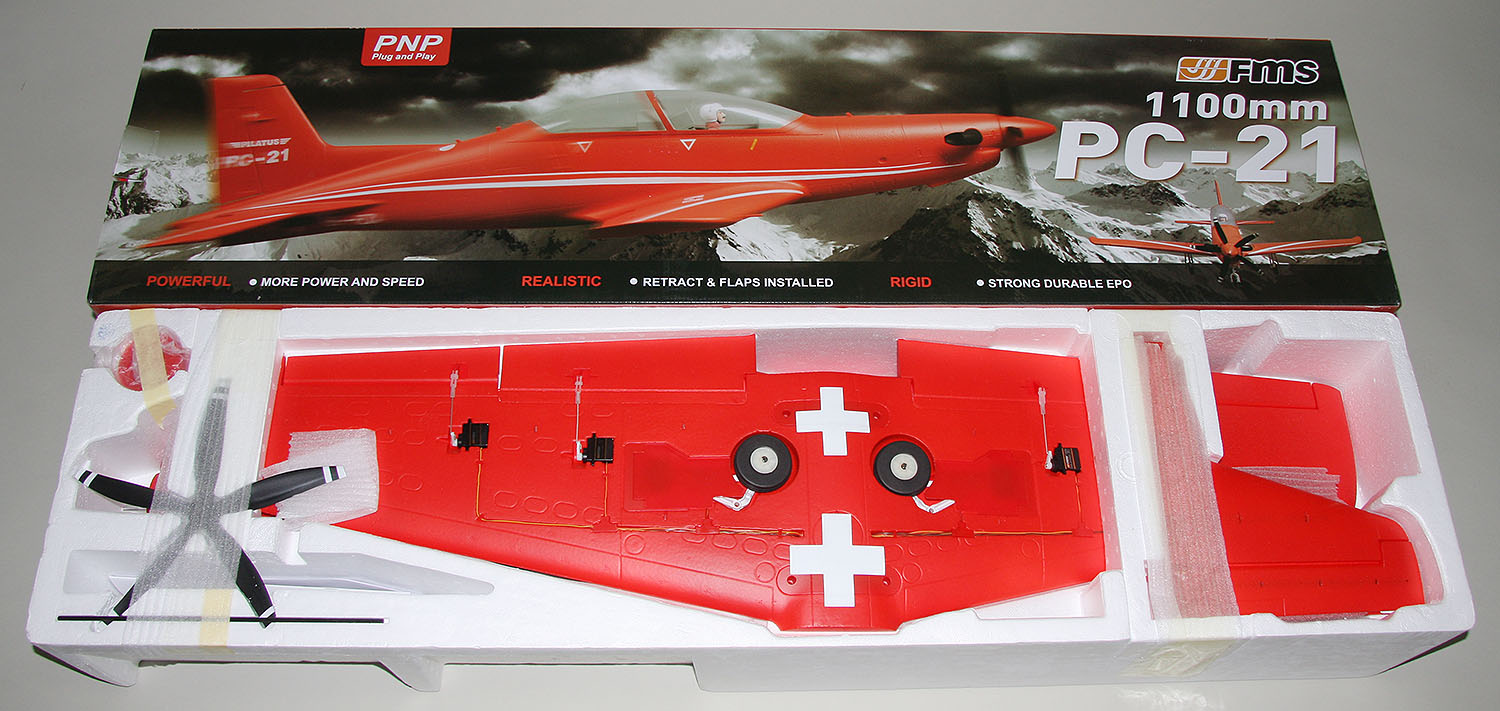
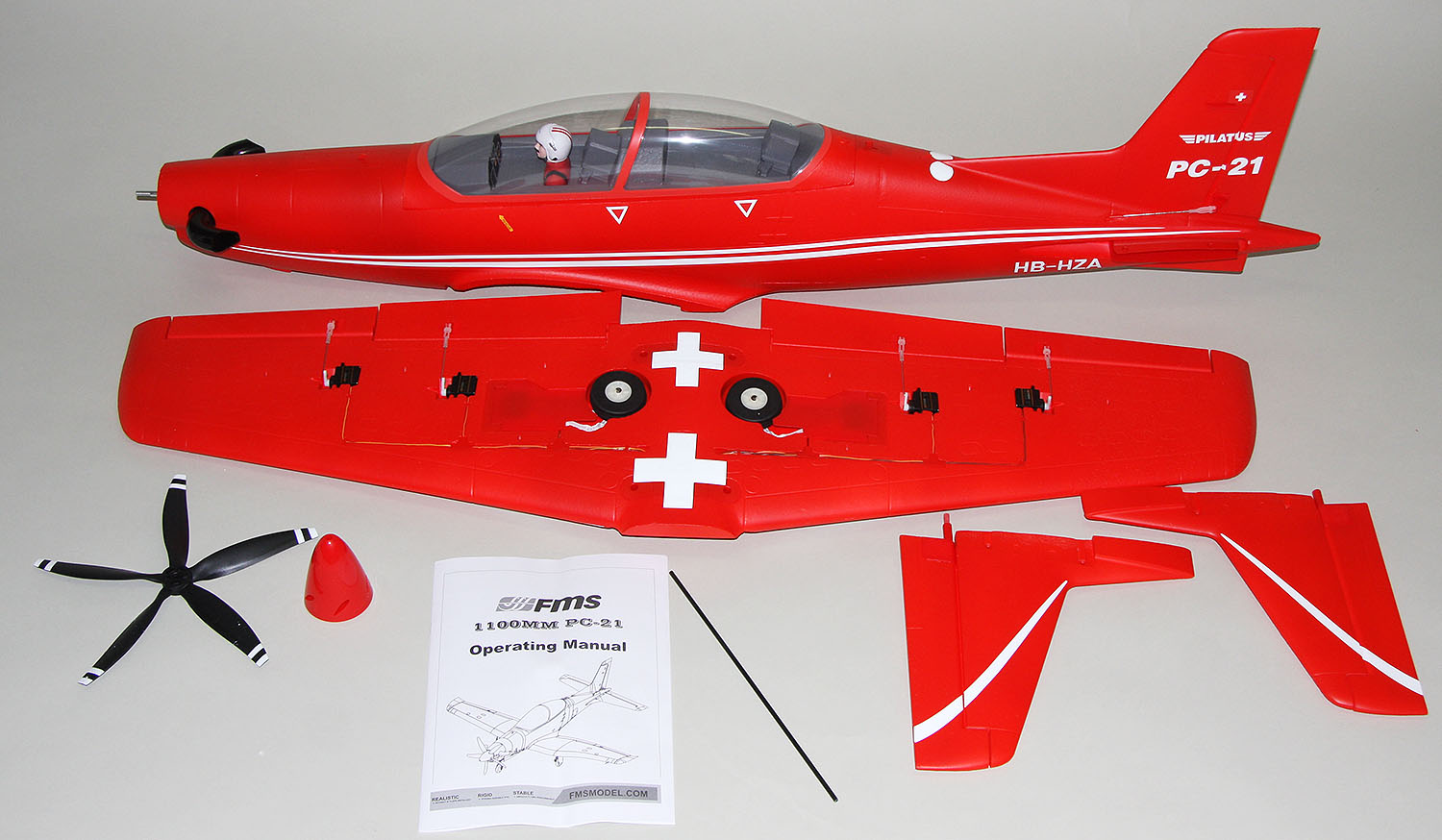
The fuselage features a quite impressive 3541-Kv750 brushless outrunner motor, controled by a 40 A ESC with 3A SBEC to power the receiver, the servos and the landing gear. Under the motor set, the front electric retractable landing gear have his own steering servo, and doors have a very accurate system and they close perfectly.

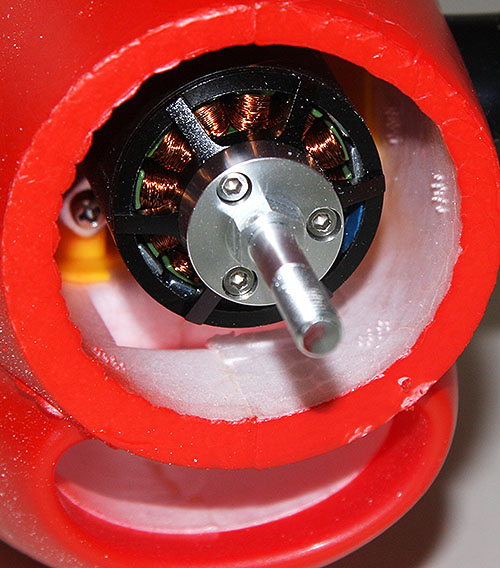
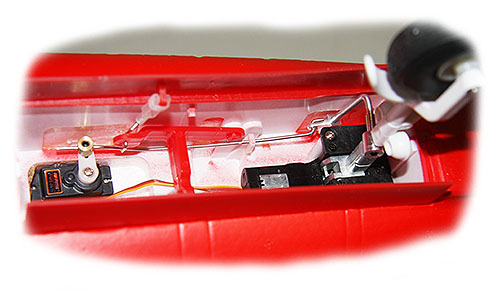
The center of the fuse offers a lot of space for the receiver and the battery. The canopy-hatch is locked by a springed latch and features instrument panels and a pilot figure in the front seat.

The rudder servo is at the rear of the center compartment, the elevator servo is at the rear of the fuselage, under the right stabilizer. We can notice many plastic parts ensuring a perfect positionning of the wing and of the half stabilizers.
The one piece wing includes carbon spars and is really stiff. Four servos are factory installed for the ailerons and the flaps. The flaps shows an original design, with a wide width at the lower side, but a small width at the upper side of the wing. In fact, they are a mix of classic flaps and of split flaps, and they simulate the look of fowler flaps, but they remain very simple.
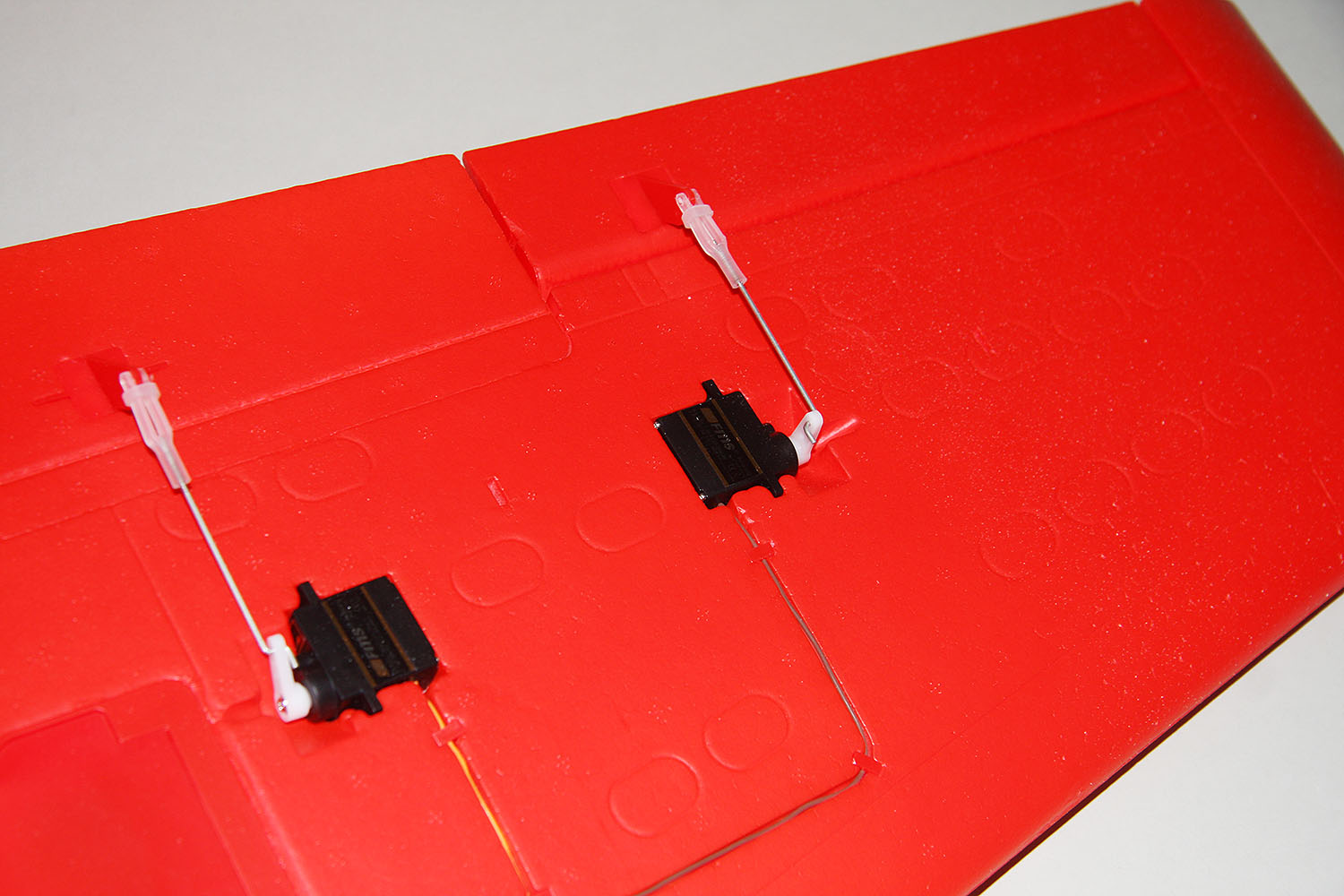

The main electric retracts features molded struts, with a scale look, but there is no real shock absorbers. The doors close perfectly.

All the servos and retracts wires are connected to a special adapter, so you only have 3 wires to connect to the receiver for the aileron, flaps and gear channels. For those who prefer using one channer for each aileron and for each flap, it is easy to remove this adapter.
The wiring of each servo or retract is very clean, and no colored tape is used, that's better for the look.
The half stabilizers features carbon spars, and a stab carbon tube will ensure a stiff assembly.
The special 5-blade prop have a 10" diameter and 7" pitch. A special spinner offers the scale aspect of the real aircraft. Note that spare 5-blade props are available at MCM Skyshop, as it is not possible to change this prop for a standard 2 blade prop, the ground distance is too small for this.
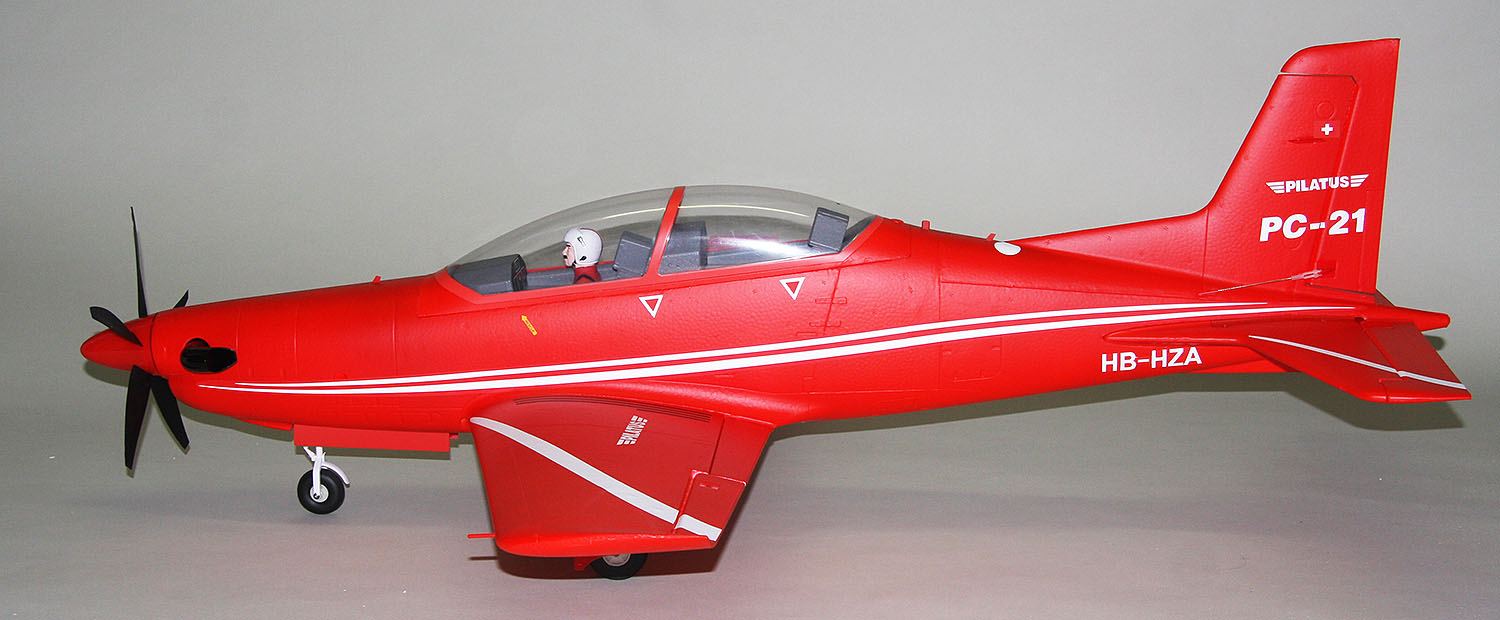
Equipment needed
First, you need a 6 channel (or more) transmitter and receiver. We suggest a computerized radio system, so you will can use expo, and you will can have a flap-elevator mixing to correct the nose up effect of the flaps. With 7 channels, you can have one channel for each aileron. With 8 channels, you can have also one channel for each flaps, this allows more easy settings. And with 9 channels, you can have a separate channel for the front wheel steering, this is helpful to trim separately yhe rudder and the front wheel, and you uses a free mixing between the rudder and the front wheel steering.
About the flight battery, FMS suggest a 4S 2500-3300 mAh LiPo battery. This is a perfect range ! During our tests, we have used 2600 and 3200 mAh batteries. The flight time is 6-7 minutes with the smaller batteries, and 8-9 minutes with the 3200 mAh, using 70% of the capacity in each case. Note that the battery is close to the CG, so it is easy to use different capacities.
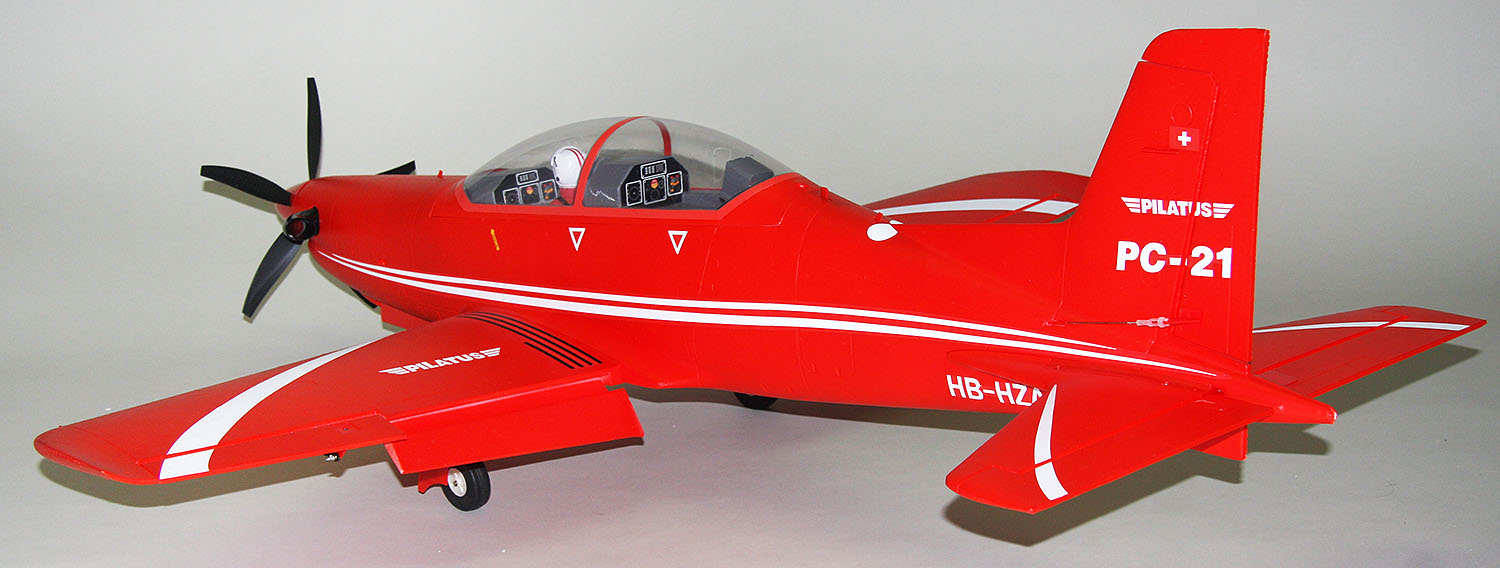
Assembly
You juste need 20 minutes to make the final assembly of this PC-21 ! The wing is secured by four stell screws (you need a 2 mm hex wrench), and the half stabilisers are simply slided in position with the stab joiner tube, and two small self tapping screws secure each one. The elevator lonkage is now connected to the servo arm and to the elevator horn under the right stab.
Then, the spinner back plate, the prop and the spinner are attached to the motor axle. And… That's all ! In fact, no, because you have to secure the receiver with hook and loop material and to connect the wires before programming your transmitter.
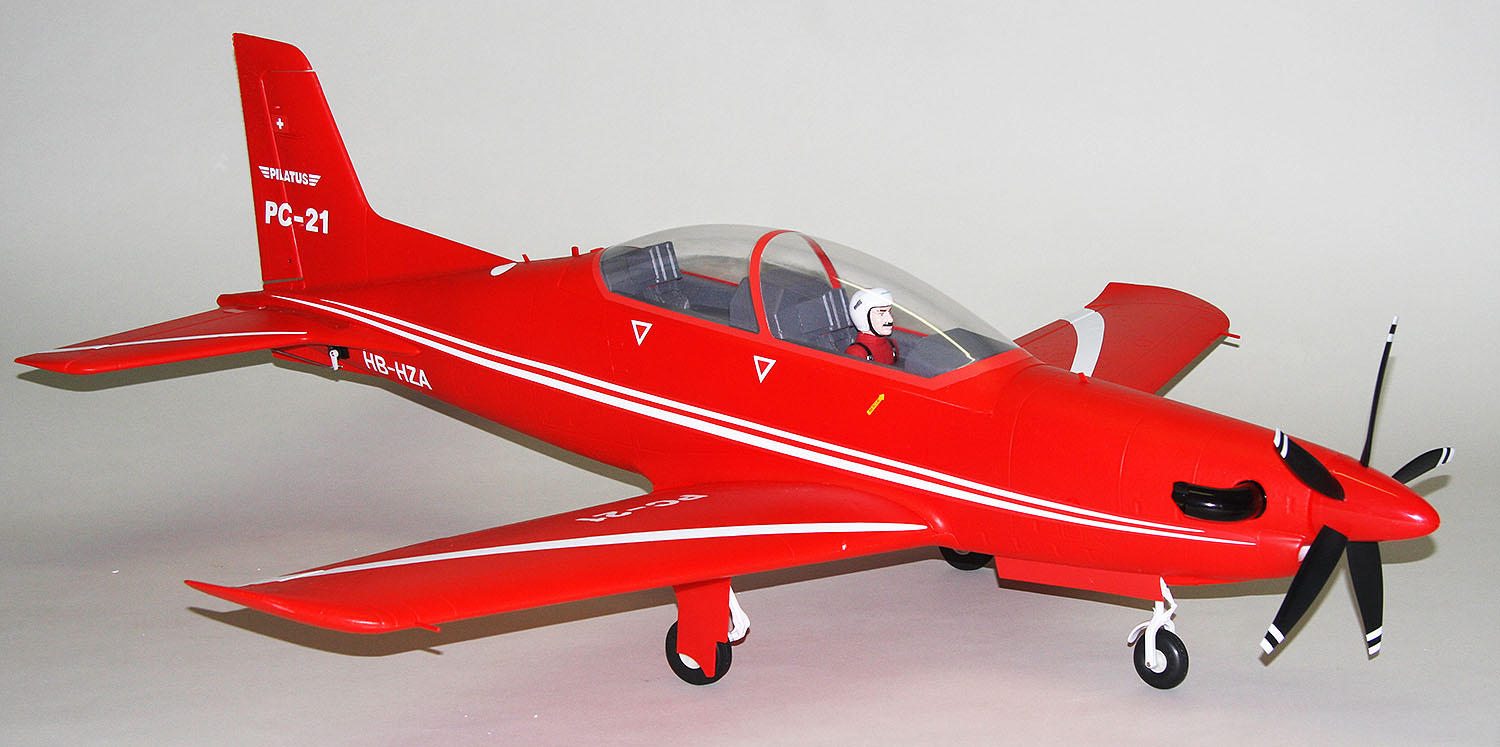
Settings
About the CG, we have found the value of the manual too conservative. This CG needs to change the location of the battery, or to add a huge weight in the nose, and the landing speed will be increased. Our flight tests shows that the CG may be more aft, and we suggest a value beetween 105 and 110 mm back of the leading eadge, against the fuselage. Don't be afraid, the flight behavior is really nice at this CG location.
The plane flies well with approximatively 1 mm of down trim on the elevator. Even if it is quite easy to trim the plane during the first flight, you will avoid a low speed first take-off if you set the trim before flying.
The low rates of the manual gives a nice behavior for elevator and rudder in all the speed range. For ailerons, we prefer more throw, the high rate value of the manual, with some expo. The roll rate is better and more scale at this setting.
For flaps, the manual doesn't give any value. We suggest 15 mm down for take off, and 30 mm down for landing. Flaps produces a nose up effect, and we have 1 mm of down elevator for take off flap setting, and 2 mm of down elevator for landing flaps setting. On some transmitters, you will use a flap-elevator mixing, and on others with flight modes, you can use a different elevator trim setting for each flight mode.
Only for spins or for snap rolls, we used the high rates for elevator and rudder, with a lot of expo, but it is the only maneuvers requiring such throws.

Flight tests
We have fly the PC-21 from concrete and asphalt runways. Firsts flight from a 300 fts long runway to learn to fly this plane, and then, from a only 150 fts long runway. For intermediate pilots, we suggest quite long runways because landing may be long if the speed is not perfectly managed during final approach. Experienced pilots will not have problems with a 150 ft runway. The PC-21 can also be flown from grass runways, if grass is short cut. Then, landing distance will be shortened.
Ground taxi is quite easy, the soft authority of the front wheel ensure accurate steering. The "look" on ground is very realistic, with a nose down attitude, like the real PC-21.

For take off, if the runway is long, we only use 60-70% of the power to make a long 150-200 fts realistic take-off. For grass or short runway… Full throttle and the PC-21 is airborne after a 100 fts roll or less. Just notice that the 5 blade prop and the big motor have some torque effects and you need to be reactive on the steering.
The response of the controls is efficient, but the plane is never "nervous". The PC-21 like to be flown with a "jet style", with a high speed and with very small inputs on the control. So, it uses a wide space and it is better to fly smoothly, saving the energy. The power is very good to have a high speed in horizontal flight and to make climbs with a high rate. Aerobatic maneuvers are a real pleasure, but it must be "high speed" aerobatics, like for the real one. If you search 3D or "Extra like" aerobatic, this is not your plane ! But for long trajectories, for slow aileron rolls along all the flying field, for giant barrel rolls, the PC-21 is really fantastic ! During rolls, inverted flight or when flying knife edge, you just need very few actions at elevator or rudder. This not a F3A, but it is easy to have very accurate trajectories.
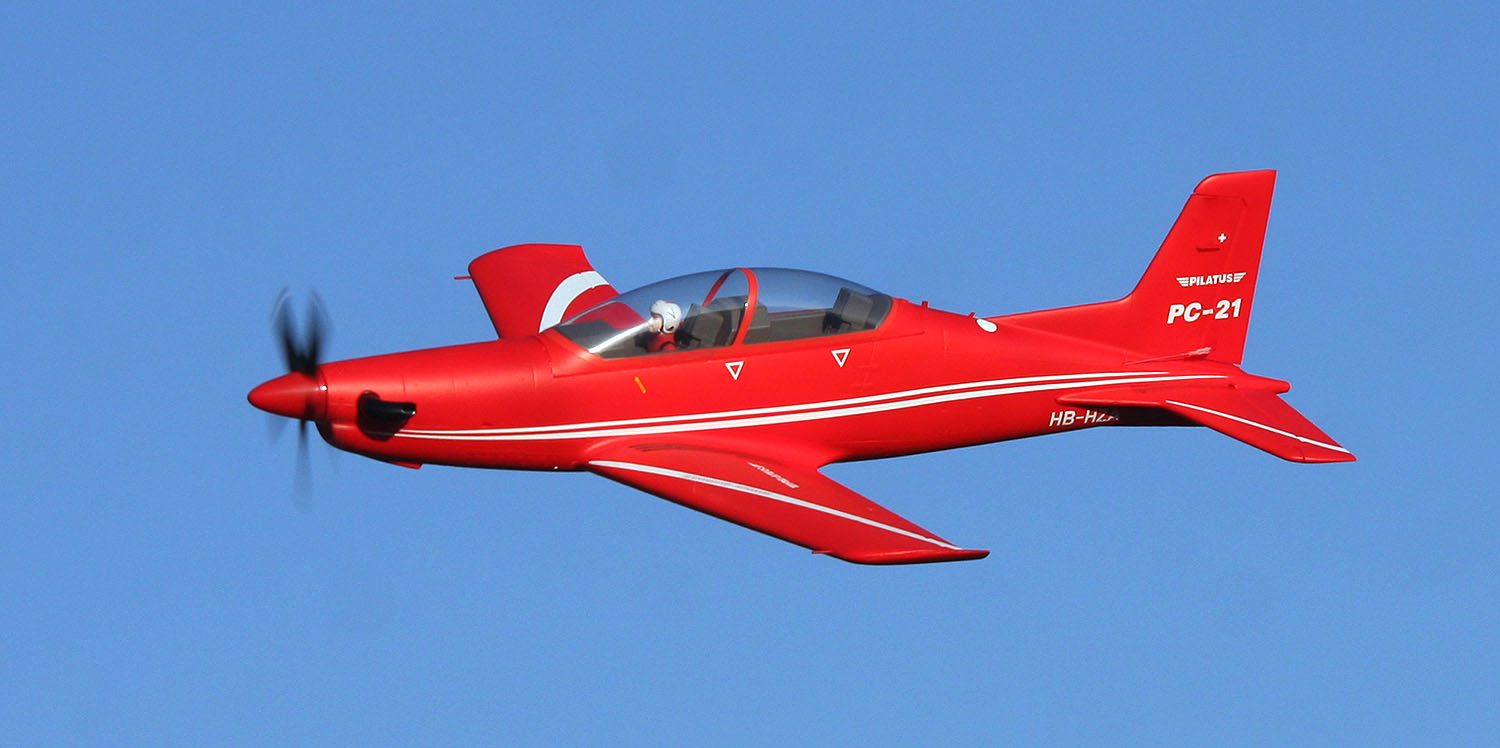
When we says the PC-21 like to make "High Speed " aerobatics, this doesn't mean that low speeds are bad or dangerous. It only mean that aerobatics are better and more "scale" at high speeds !
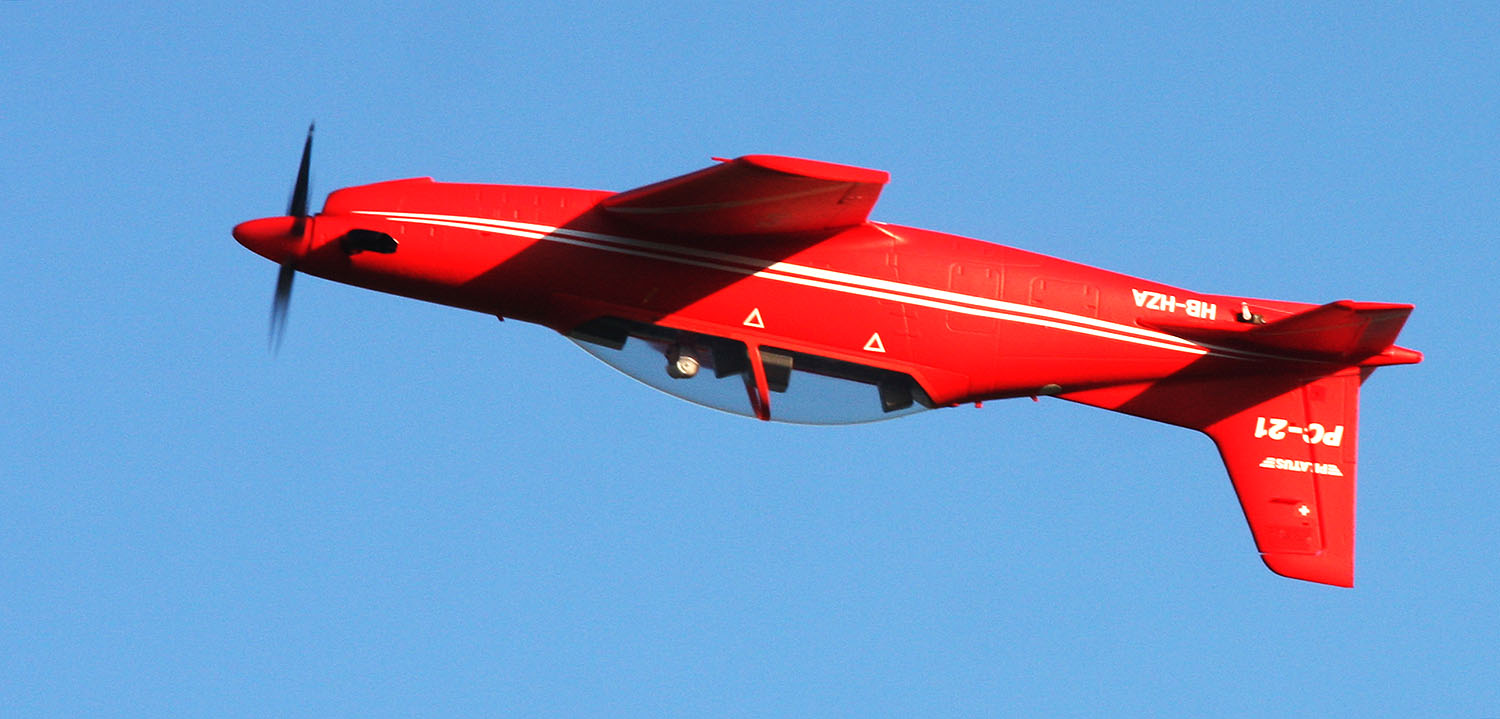
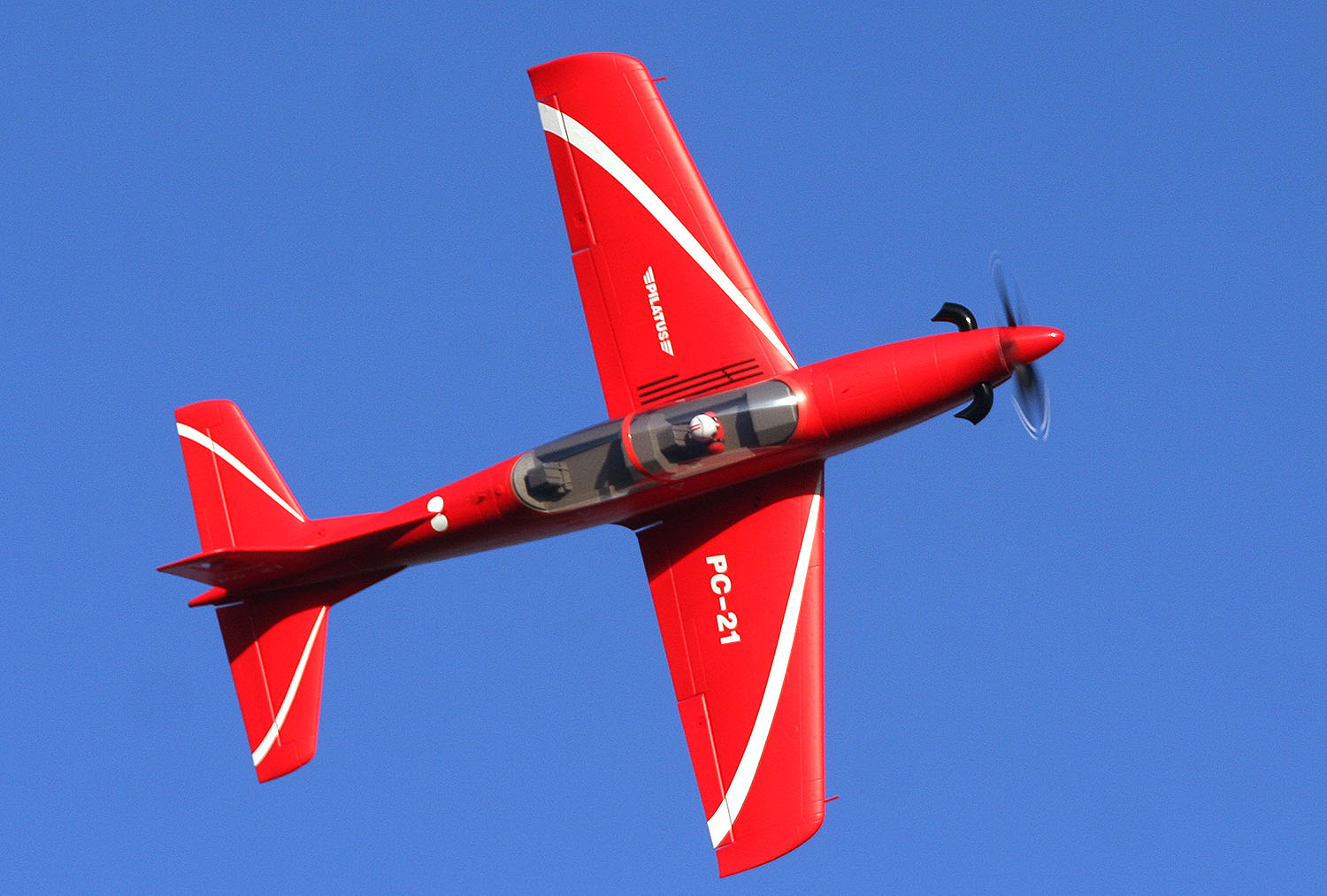
Now, let's fly the PC-21 at low speed. Flaps and gear up, the stall comes late, with the elevator close to the full throw. The plane may dive on one wing, but you juste have to center the elevator stick and the PC-21 recovers immediatly. With high rates, the stall is really more severe, and with full rudder and a few ailerons, the PC-21 spins with nose down attitude, and the spin is quite unstable. After 3 turns, the recovery is easy, just centering the sticks. Now, if you want to fly the PC-21 at low speed, the flaps are really very efficients. The first step allows low speed pass without fear, with an horizontal attitude of the fuselage. With full flaps, low and slow pass is made with a "nose down" attitude, very far of the stall speed ! The behavior is soft, really a pleasure.

We now have to land the PC-21. Downwind, reduce the power to 50%. Then, lower the landing gear, the drag is quite important and the speed slows down quickly. Add the 1st stage of flaps and adjust the power to keep a moderate speed. When in line with the runway, set full flaps and don't try to fly too slow. Keep the PC-21 nose down and save power with 30-50% throttle, with the nose pointing directly to the beginning of the runway. Don't be afraid, the speed may seems high, but the drag of the landing gear and of the flaps helps to slow down quickly when you will cut the power. Fly the PC-21 to be 1 m higth at the beginning of the runway, cut the power and just keep the fuelage horizontal. Don't try to land "nose up", this is not a taildragger, not a "Cessna"… The main landing gear touches softly, and the front gear comes to the ground just after. The landing course is quite short if you do this way. Trying to flare a lot to land nose up at lower speed makes longer landings !

The tests have demonstrated that the PC-21 is not a plane for beginners, but for intermediate pilots, it is not a difficult model. If you fly without problem a low wing trainer and can perform basic aerobatic maneuvers, you can fly the PC-21.

A great small plane !
With only 1.1 m wingspan, the PC-21 may seems to be a small RC plane… In fact, the wide and long fuselage, the big brushless motor, and the 4S battery pack makes of this PC-21 a plane to store in the 1.4 m planes class ! In flight, it use a wide volume, and is not a "park flyer". Really an amazing aircraft, and one more proof that FMS masters perfectly the aerodynamics, the foam process and the design of complex systems. Try the PC-21, you will love it !
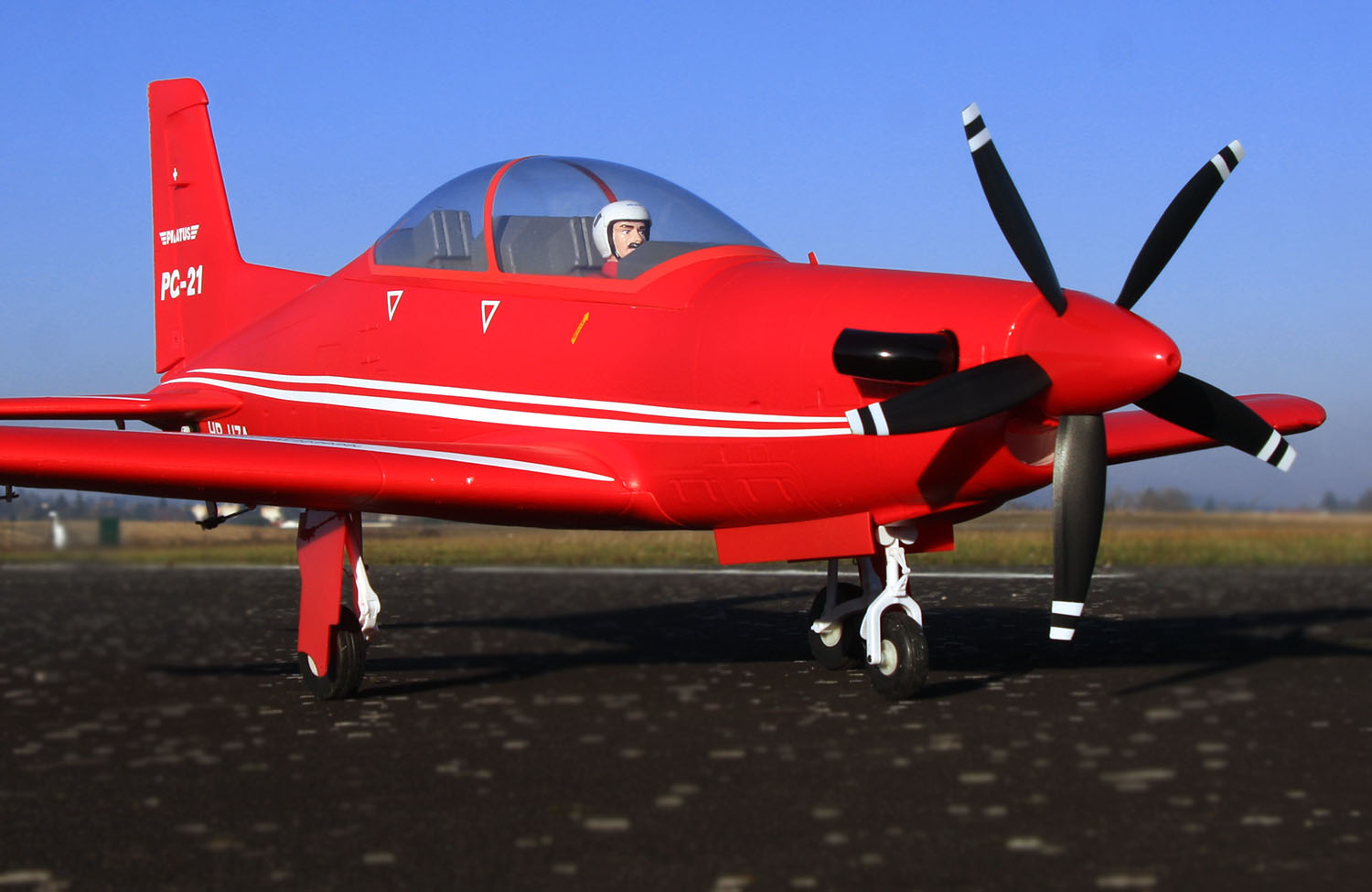
Produits liés
Partager ce contenu
MCM undertakes
Deliver within 24/48h
To send your order within 24h (on working days) (according to the limit of the available stock) & and delivered quickly.
MCM Crew
A team of specialists is at your disposal in your language (Fr, Du & En) at + 32 2 376 24 05 (No. non-premium rate) from tuesday till thursday from 12.30 till 18.00 & friday to saturday from 10.00 till 18.30 or by email.
A few figures
- A store of 400m² located south of Brussels.
- 28 years of experience.
- + 110 000 products ref.
- + 35 500 products in stock.
- + 240 distributed brands.


